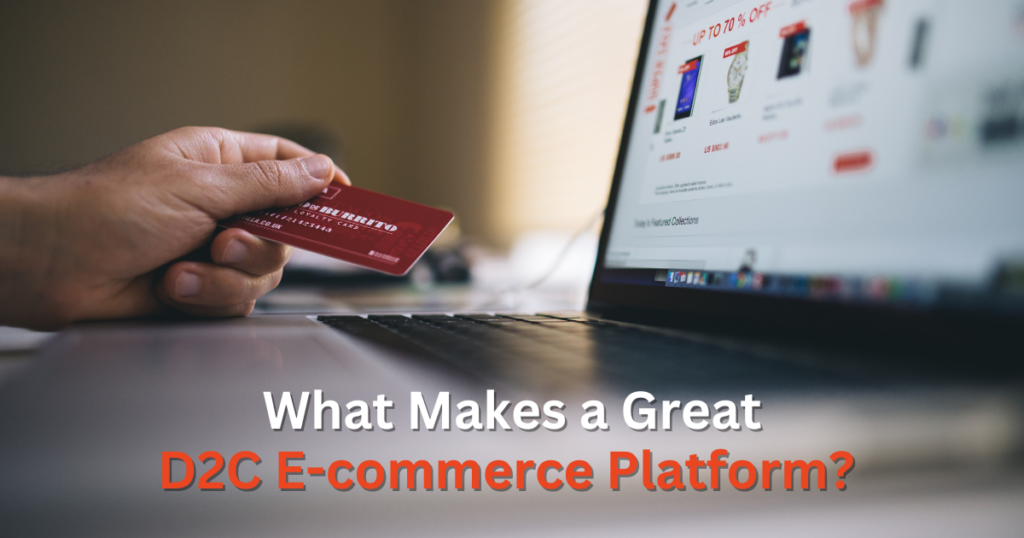
What is Direct To Consumer in E-commerce? And Is D2C the Future of Retail?

In recent years, the retail landscape has witnessed a significant shift with the emergence of Direct To Consumer (D2C) e-commerce. This business model has disrupted traditional retail practices, providing brands with a direct channel to reach consumers.
In this article, we will explore what D2C means in the realm of e-commerce, discuss its potential as the future of retail, and delve into various aspects such as marketing strategies, customer experience, supply chain, and more.
Understanding Direct-to-Consumer E-commerce:
Direct-to-Consumer (D2C) e-commerce refers to the practice of brands selling their products directly to consumers, bypassing traditional intermediaries like wholesalers or retailers.
It involves building and managing an online platform through which brands can establish a direct relationship with their customers. By eliminating the middlemen, D2C enables brands to have better control over their products, pricing, and customer experience.
D2C vs. Traditional Retail:
One of the key distinctions between D2C e-commerce and traditional retail lies in the distribution channels. Traditional retail relies on brick-and-mortar stores, while D2C primarily operates through online platforms. This fundamental difference brings several advantages for brands venturing into the D2C space.
Benefits of D2C:
- Increased Profit Margins: By removing the need for intermediaries, brands can capture higher profit margins as they retain the entire retail markup.
- Enhanced Customer Relationships: D2C allows brands to directly interact with customers, gaining valuable insights and building stronger relationships through personalized experiences.
- Greater Control over Brand Image: With D2C, brands have full control over their messaging, presentation, and overall brand image, ensuring a consistent experience across all touchpoints.
- Agile and Data-Driven Decision Making: D2C provides brands with direct access to customer data, enabling them to make informed decisions regarding product development, marketing strategies, and inventory management.
D2C Marketing Strategies:
Successful D2C brands employ various marketing strategies to drive growth and customer acquisition. These strategies often include a combination of social media marketing, influencer collaborations, content marketing, email marketing, and search engine optimization (SEO).
By leveraging these channels effectively, D2C brands can create brand awareness, engage with their target audience, and generate sales.
Disrupting Traditional Retail with D2C:
D2C e-commerce has challenged the traditional retail model by offering convenience, cost-effectiveness, and a seamless shopping experience. Many established retail brands have recognized this trend and have started incorporating D2C strategies into their business models, either by creating separate D2C channels or acquiring existing D2C brands.
D2C Success Stories:
Numerous D2C brands have emerged as success stories, showcasing the potential of this business model. Companies like Warby Parker, Dollar Shave Club, and Casper have disrupted their respective industries by leveraging the power of D2C.
These brands have focused on delivering high-quality products, exceptional customer experiences, and innovative marketing approaches.
D2C Trends:
As D2C continues to evolve, several trends have emerged within this space. These include the rise of subscription-based models, customization and personalization, social commerce, sustainability, and the integration of augmented reality (AR) and virtual reality (VR) technologies to enhance the online shopping experience.
D2C Supply Chain:
D2C brands often adopt a different supply chain approach compared to traditional retailers. They may partner with manufacturers or utilize drop-shipping methods to streamline operations and reduce inventory costs.
By optimizing the supply chain, D2C brands can improve order fulfillment, reduce lead times, and offer faster shipping to customers.
D2C Advertising:
Advertising plays a crucial role in the success of D2C brands. Digital advertising platforms like Facebook Ads, Google Ads, and influencer marketing have become instrumental in driving traffic, increasing brand visibility, and converting leads into customers.
D2C brands often rely on data-driven targeting and retargeting strategies to optimize their advertising campaigns.
D2C Market Analysis and Growth Potential:
The D2C e-commerce market has witnessed substantial growth in recent years. Market analysis indicates that this trend is expected to continue as more consumers shift towards online shopping and seek direct relationships with brands.
By adopting innovative strategies and staying attuned to consumer preferences, D2C brands can tap into the immense growth potential of this market.
Singlebag

Singlebag is a user-friendly E-Commerce Platform that allows you to effortlessly set up your online store in a matter of minutes. Its user-friendly interface and comprehensive set of marketing and sales tools are suitable for businesses of any scale.
Whether they are newcomers or established entities. This platform is an excellent option for individuals looking to broaden their customer base and successfully sell their products globally.
Conclusion:
Direct-to-Consumer (D2C) e-commerce has revolutionized the retail industry, offering brands a direct line of communication and sales with their customers. With its numerous benefits, disruptive potential, and a focus on customer-centric experiences, D2C is poised to shape the future of retail.
As brands continue to embrace this model, it is essential to stay updated on the latest trends, leverage effective marketing strategies, and prioritize a seamless supply chain to thrive in the evolving D2C landscape.






Responses